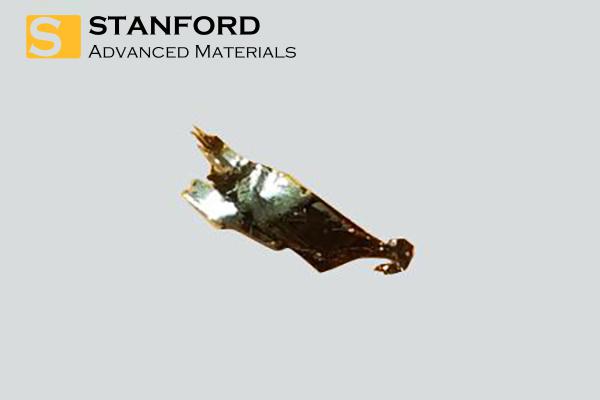Tantalum Telluride Crystal Description
Tantalum Telluride Crystal has a metallic, superconducting (at 0.1K or under applied hydrostatic pressure), and charge density wave behavior at around 160-180K. Environmentally stable monoclinic phase TaTe2 crystals have been synthesized through the flux zone method and chemical vapor transport (CVT) technique. Offered TaTe2 CDW crystals are perfectly layered, oriented in 0001 direction, and thus ready for exfoliation. Our crystals possess extremely low defect concentrations ranging from 1E10 to 1E11 cm-2. Flux zone-grown TaTe2 crystals come with guaranteed CDW behavior.
Tantalum Telluride Crystal Specifications
|
Material
|
TaTe2
|
|
Crystal system
|
Monoclinic phase
|
|
Molecular Weight
|
436.15
|
|
Unit cell parameters
|
a=1.481 nm, b=0.366, c=0.932 nm; α=γ=90°, β=110.68°
|
|
Purity
|
>99.999%
|
Tantalum Telluride Crystal Application
Advanced electronic components such as transistors and diodes.
Superconducting circuits and devices.
Thermoelectric generators for energy conversion.
Thermoelectric cooling systems.
Photodetectors.
Light-emitting diodes (LEDs).
- Materials Science Research:
Investigation of fundamental properties such as electronic structure and superconductivity.
Development of new materials with tailored characteristics.
Potential use in devices that convert thermal energy into electrical energy.
Development of sensors based on their electronic and optical properties.
Tantalum Telluride Crystal Packaging
Our Tantalum Telluride Crystal is carefully handled during storage and transportation to preserve the quality of our product in its original condition.
Tantalum Telluride Crystal FAQs
Q1: What is Tantalum Telluride (TaTe)?
Tantalum Telluride (TaTe) is a compound consisting of tantalum (Ta) and tellurium (Te), known for its unique electronic, superconducting, and thermoelectric properties.
Q2. What is the structure of the monoclinic phase TaTe₂?
Monoclinic phase TaTe₂ has a layered structure that exhibits metallic, superconducting, and charge density wave (CDW) behaviors around 160-180K.
Q3. How are TaTe₂ crystals synthesized?
They are synthesized using methods such as the flux zone method and chemical vapor transport (CVT) technique, which ensure high purity and low defect concentrations.
Q4. What is the significance of charge density wave (CDW) behavior in TaTe₂ crystals?
CDW behavior indicates a periodic modulation of the electronic charge density in the material, which is significant for understanding its electronic properties and potential applications in advanced electronic devices.
 Get a Quote
Get a Quote
